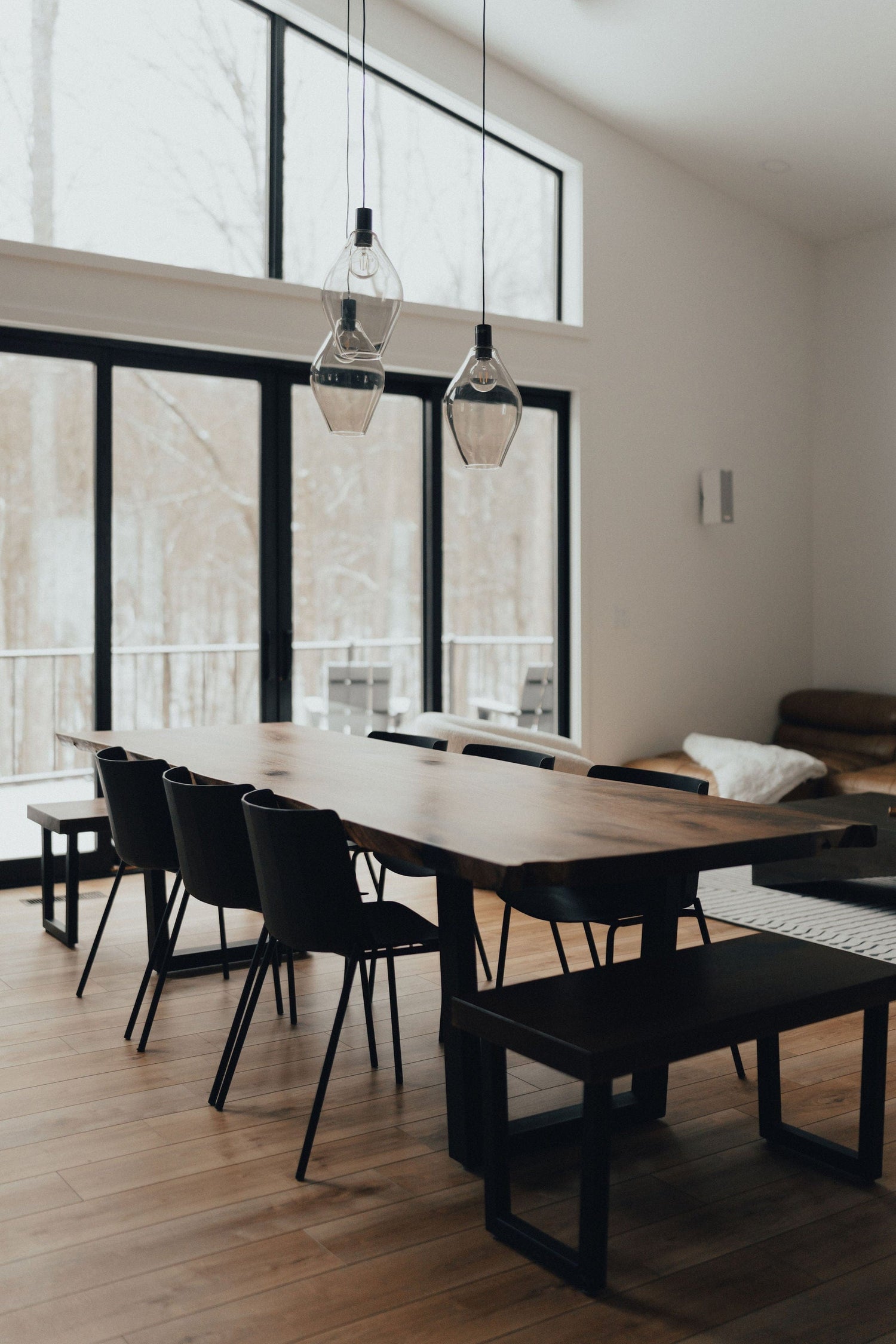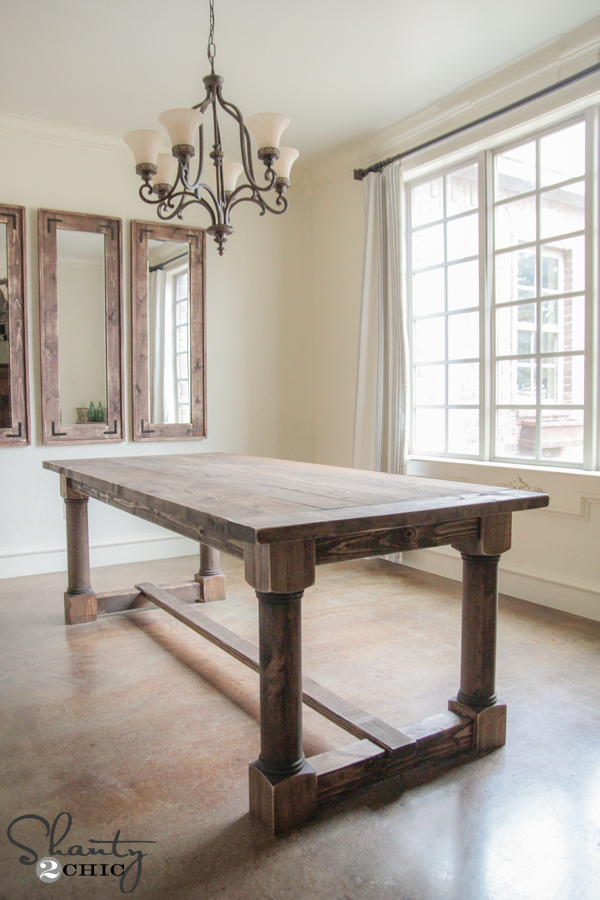Dining Room Table Legs: A Guide to Selecting the Right Style for Your Home
Dining Room Table Legs: A Guide to Selecting the Right Style for Your Home
Blog Article
Just How to Pick the Perfect Dining Room Table Legs for Your Home Decor
Selecting the ideal dining room table legs is a nuanced procedure that calls for mindful consideration of different elements, including your space restraints, visual choices, and useful needs. The interplay in between designs, measurements, and products can dramatically affect the ambiance of your dining location, making it crucial to approach this decision systematically.
Assess Your Eating Room
Assessing your eating area is essential for selecting the right table legs that enhance both appearances and performance. Begin by measuring the measurements of your dining location, including ceiling elevation, flooring space, and closeness to other furnishings. This info will certainly assist identify the ideal size and elevation of your dining table, which directly affects the choice of table legs.
Following, consider the style and format of your dining area. An open-concept layout may benefit from table legs that use aesthetic lightness, such as slender steel or acrylic alternatives. Conversely, a much more typical setting may ask for tough wooden legs that supply a feeling of permanence.
Assess the existing color scheme and products in your dining location. Integrating the table legs with these components develops a natural appearance that boosts the general decoration.
Eventually, a thorough assessment of your eating room will certainly assist you in making an educated choice, making sure that your table legs not only enhance the visual allure yet likewise serve useful purposes.
Consider Your Style Preferences
When picking dining-room table legs, it is crucial to assess your individual style preferences, as they substantially influence the overall aesthetic of your dining room. Your selection of table legs can either enhance or comparison with existing decor, making it crucial to straighten them with your preferred indoor layout style.
If your home leans towards a modern visual, think about sleek steel or minimalist wooden legs that provide a tidy, clean look. For an extra typical strategy, luxuriant wood legs with complex carvings can include a touch of sophistication and elegance. Industrial styles gain from durable, raw materials such as redeemed wood and metal mixes, reflecting a sturdy charm.
In addition, farmhouse and rustic styles usually favor tough, chunky legs that stimulate a sense of warmth and comfort. On the other hand, if your decoration is diverse, you might pick non-traditional forms or a mix of materials to produce aesthetic rate of interest.

Evaluate Material Options
The option of material for eating area table legs plays a pivotal role in both toughness and visual appeal. Common materials include wood, metal, and composite choices, each offering unique features that can affect the total appearance and longevity of your table.
Wood is a traditional option, understood for its heat and versatility. Hardwoods like oak and walnut give remarkable stamina and can be finished in various spots to match any type of decoration. Softwoods like yearn are a lot more susceptible to scratches and dents, making them less perfect for high-traffic areas.
Metal legs, often crafted from steel or light weight aluminum, exude modernity and industrial charm. They are resistant and highly durable to wear, making them ideal for family members with children or constant gatherings (dining room table legs). Additionally, metal can be completed in numerous colors, boosting the modification opportunities
Composite materials, such as MDF or laminate, offer cost and diverse styles. While typically much view publisher site less durable than strong wood or steel, they can still supply a fashionable appearance and are frequently very easy to preserve.
Ultimately, the product you choose need to line up with your lifestyle, visual preferences, and the level of usage your eating table will experience.
Determine Elevation and Dimension
Choosing the ideal elevation and size for your dining-room table is important for both functionality and comfort. The standard height for eating tables normally varies from 28 to 30 inches, allowing adequate legroom for most people when seated. It is essential to consider the dimensions of your eating space and the types of chairs you intend to use.

Additionally, take into consideration the percentages of your dining space. A larger table in a large location can create a grand ambiance, while a smaller table functions well in more intimate settings. Ultimately, the best height and size will certainly integrate with your total decor and boost the dining experience for you and your guests.
Explore Modification Opportunities

Furthermore, the design of the legs can be tailored to fit different styles, such as rustic, modern-day, or industrial. As an example, conical legs can evoke a mid-century modern-day feel, while chunky, block-style legs might resonate with typical or farmhouse decoration.
Property owners can additionally check out shade surfaces, from all-natural wood stains to repaint, enabling them to match or comparison with the tabletop and bordering style.
In addition, leg elevation can be changed to accommodate details seating plans or individual choices, improving both convenience and functionality.
Last but not least, special decorations, such as carvings or ornamental braces, can even more personalize the table legs, making the dining experience not simply a meal but a declaration item in the home. By considering these modification options, homeowners can develop a dining space table that truly shows their originality.
Conclusion
Selecting the suitable eating room table legs needs mindful factor to consider of various elements, consisting of the measurements of the eating space, style preferences, material longevity, and desired height. Personalization alternatives further improve the capability to attain a natural aesthetic that complements the general decoration. By methodically reviewing these elements, property owners can make sure that the picked table legs not only satisfy practical demands yet these details additionally add favorably to the eating experience and setting of the home.
Picking the excellent eating area table legs is a nuanced procedure that calls for mindful factor to consider of numerous components, including your area restraints, visual choices, and functional requirements.Examining your dining area is important for choosing the right table legs that match both visual appeals and functionality.When identifying size, measure the location where the table will certainly be put to ensure it fits easily, enabling for at least 36 inches of clearance around the table for simple movement. A bigger table in a large area can create a grand setting, while a smaller sized table works well in even more intimate setups.Choosing the perfect dining area table legs needs careful factor to consider of different factors, consisting of the dimensions of the eating area, style choices, product sturdiness, and desired elevation.
Report this page